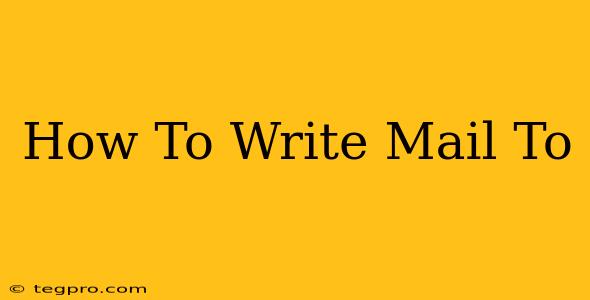How To Write Emails That Get Results: A Comprehensive Guide
Writing effective emails is a crucial skill in today's digital world. Whether you're reaching out to potential clients, collaborating with colleagues, or simply keeping in touch with friends and family, crafting well-written emails can significantly impact your success. This guide will provide you with a step-by-step approach to writing emails that get results.
1. Understanding Your Purpose: Before You Write
Before you even open your email client, take a moment to define your objective. What do you want the recipient to do after reading your email? Are you requesting information, scheduling a meeting, making a sale, or simply updating someone? A clear purpose guides your entire writing process.
2. Subject Line: The First Impression
Your subject line is your email's first and perhaps most important impression. It needs to be concise, compelling, and relevant to the email's content. Avoid generic subject lines like "Checking In" or "Update." Instead, try something specific and attention-grabbing, such as:
- For a sales email: "Increase Sales by 20% with [Your Product/Service]"
- For a networking email: "Connecting Regarding [Shared Interest/Industry]"
- For a follow-up email: "Following Up on [Previous Conversation/Meeting]"
Pro Tip: A/B test different subject lines to see what resonates best with your audience.
3. The Salutation: Personalize Your Greeting
Unless you're emailing a large, impersonal group, always use a personalized salutation. Avoid generic greetings like "To Whom It May Concern." If you know the recipient's name, use it. For example:
- "Dear [Name],"
- "Hi [Name]," (Slightly less formal)
If you're unsure of the recipient's gender or preferred name, err on the side of formality.
4. Body: Clarity, Conciseness, and Professionalism
The body of your email should be clear, concise, and professional. Avoid jargon and unnecessary details. Use bullet points or numbered lists to break up large chunks of text and improve readability. Here's a suggested structure:
- Opening: Briefly state the purpose of your email.
- Body: Provide relevant details and supporting information.
- Call to Action: Clearly state what you want the recipient to do next.
Example:
Hi [Name],
I'm writing to follow up on our conversation yesterday regarding [topic]. As discussed, I've attached the proposal for your review. Please let me know if you have any questions or would like to schedule a call to discuss it further.
Thank you for your time.
Sincerely,
[Your Name]
5. Closing: Professional and Polite
Choose a professional closing that suits your relationship with the recipient. Common options include:
- "Sincerely,"
- "Regards,"
- "Best regards,"
- "Thank you,"
6. Proofreading: Accuracy is Key
Before sending your email, always proofread it carefully for any grammatical errors or typos. Errors can damage your credibility and professionalism.
7. Email Etiquette: Important Considerations
- Respond promptly: Aim to respond to emails within 24-48 hours, or as soon as possible.
- Use a professional email address: Avoid using unprofessional or informal email addresses.
- Use appropriate formatting: Use clear formatting to make your email easy to read.
- Respect the recipient's time: Keep your emails concise and to the point.
- Avoid excessive use of exclamation points: Using too many exclamation points can make your email seem unprofessional or overly enthusiastic.
By following these guidelines, you can significantly improve your email writing skills and create messages that are clear, concise, and effective in achieving your desired outcome. Remember, practice makes perfect!

